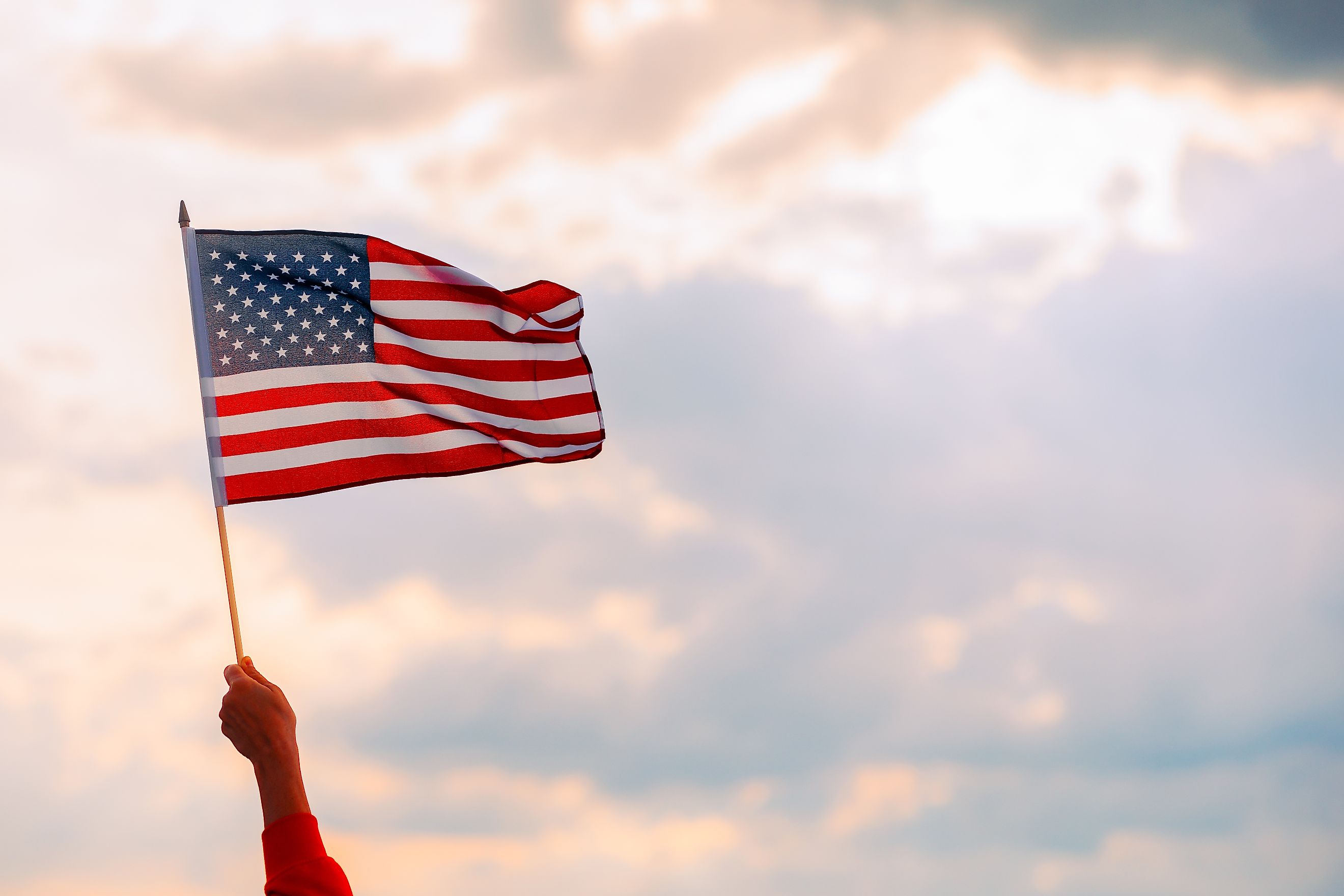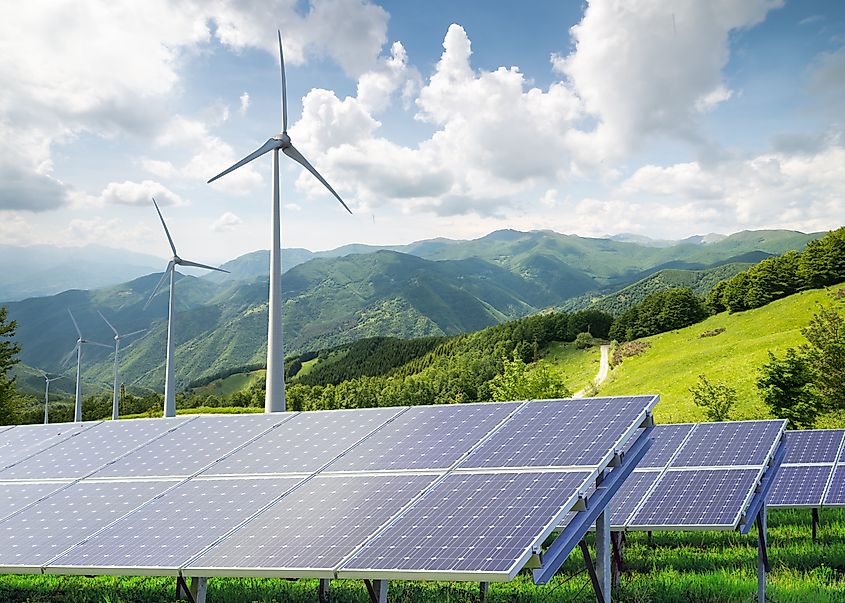
10 Interesting Facts About the USA
1. It has the biggest economy in the world
The United States stands as the powerhouse of the global economy, boasting the largest economic output on the planet. Accounting for about a quarter of the world's nominal GDP, this economic dominance is underpinned by a myriad of factors. With its vast population, the USA leverages a diverse workforce and a consumer base that drives demand both domestically and internationally.
High average incomes and a relatively young population further fuel economic growth, while technological innovation continues to push boundaries across various sectors. Moreover, moderate unemployment rates signify a dynamic labor market, contributing to the nation's economic resilience. In essence, the USA's economic stature reflects not only its inherent strengths but also its relentless pursuit of progress and prosperity.
2. The United States invented the internet
The internet's genesis can be traced to the mid-20th century with the rise of electronic computers. By the early 1960s, the US Department of Defense spearheaded initiatives exploring packet network systems, culminating in the development of ARPANET, the pioneering switching network.
Formed through government contracts, ARPANET marked a monumental advancement in communication technology, setting the stage for the modern internet. Its inception heralded an era of unprecedented connectivity, reshaping global communication paradigms and revolutionizing the digital landscape we navigate today, epitomizing the United States' pivotal role in fostering innovation and driving technological progress.
3. Alaska has the longest coastline of any state

Alaska stands unrivaled among US states for possessing the most extensive coastline. Spanning an impressive 6,640 miles, its shoreline surpasses that of any other state. When considering islands, bays, inlets, and sounds, Alaska's coastal expanse expands even further to approximately 33,904 miles. This vast shoreline, complemented by its intricate network of waterways, contributes to a tidal shoreline stretching over an astonishing 47,300 miles.
Alaska's unparalleled coastal reach not only showcases the state's geographical grandeur but also underscores its significance in marine ecosystems and its rich maritime heritage.
4. At some point, 1 out of every 8 Americans will work for McDonald's
McDonald's stands as one of the nation's foremost employers, boasting a substantial workforce. According to "Fast Food Nation," a staggering statistic suggests that at some point, an estimated 1 out of every 8 Americans will have worked for McDonald's. This pervasive presence in the job market underscores the fast-food giant's significant impact on American employment dynamics. Notably, this statistic also implies that McDonald's served as an early workplace for numerous individuals, including notable celebrities, before they achieved fame. Such widespread employment highlights McDonald's enduring influence on American culture and its role as a cornerstone of the fast-food industry.
5. There is no official language
While English serves as the predominant language across the United States, notably lacking an official status at the federal level, the nation's linguistic landscape is characterized by diversity. Even though English is not officially declared as the national language, federal laws, especially those related to becoming a citizen, usually require people to be proficient in English.
Despite this, Spanish emerges as the second most prevalent language nationwide, reflecting the country's rich multicultural fabric. Moreover, Spanish holds the distinction of being the most commonly taught second language in the United States, further illustrating the nation's embrace of linguistic plurality and its commitment to facilitating communication across diverse communities.
6. The United States uses 18% of the world's energy

Based on 2014 energy consumption data, the global energy usage amounted to 539 quadrillion British Thermal Units (BTUs). Within this context, the United States emerged as a significant consumer, accounting for around 98 quadrillion BTUs, roughly translating to 18% of the world's total energy consumption. This substantial energy demand underscores the nation's pivotal role in global energy dynamics.
The United States' extensive consumption patterns reflect its vast industrial, commercial, and residential sectors, all of which heavily rely on energy sources. This statistic not only highlights the nation's formidable economic activity but also emphasizes the imperative of sustainable energy management practices moving forward.
7. Its capital was originally New York City
In an intriguing historical twist, New York City held the distinction of being the inaugural capital of the United States. This status prevailed for five years, from 1785 to 1790, marking a crucial era in the nation's formative years.
Following the defeat of the British and the subsequent Treaty of Paris, New York City emerged as a focal point for the nascent American government. Its tenure as the capital city underscores the pivotal role played by New York in shaping the early foundations of the United States, laying the groundwork for subsequent developments in governance and national identity.
8. Its flag was designed by a high school student
Crafted by Robert G. Heft, the current rendition of the United States flag boasts 50 stars, symbolizing each state. Heft's journey to designing this iconic emblem began in 1958 during his junior year of high school when he undertook the project as part of his coursework.
Despite initially receiving a modest grade of B- from his teacher, Stanley Pratt, Heft's design garnered national attention. Pratt, recognizing its significance, made a bold promise to reconsider Heft's grade if the United States Congress endorsed the design. Remarkably, Heft's flag was not only selected but also officially adopted by presidential proclamation in 1959, immortalizing his contribution to American symbolism.
9. 100 acres of pizza are served in the United States every day

In the culinary landscape of the United States, pizza reigns supreme as the quintessential fast food choice, surpassing even the iconic burger in popularity. Statistics from the pizza industry trade organization reveal a staggering figure: approximately 100 acres of pizza are consumed daily across the nation.
This enduring love affair with pizza is further validated by the American Customer Satisfaction Index, which indicates that Americans consistently express higher satisfaction levels with pizza compared to burgers. Such widespread consumption and satisfaction underscore the profound cultural significance of pizza in American society, cementing its status as a beloved culinary staple cherished by millions.
10. 80% of the land in the state of Nevada is owned by the government
In Nevada, the government owns a significant portion (about 80%) of the state's land. This vast expanse is earmarked for various purposes, including wildlife refuges, forests, wilderness areas, monuments, national parks, and management by the Bureau of Land Management.
Nevada's public lands encompass a diverse array of landscapes, spanning from expansive deserts and abandoned mining towns to remote ranches and towering mountain ranges. This extensive federal ownership not only underscores the government's stewardship of natural resources but also shapes the state's unique identity and the experiences of its residents and visitors alike.